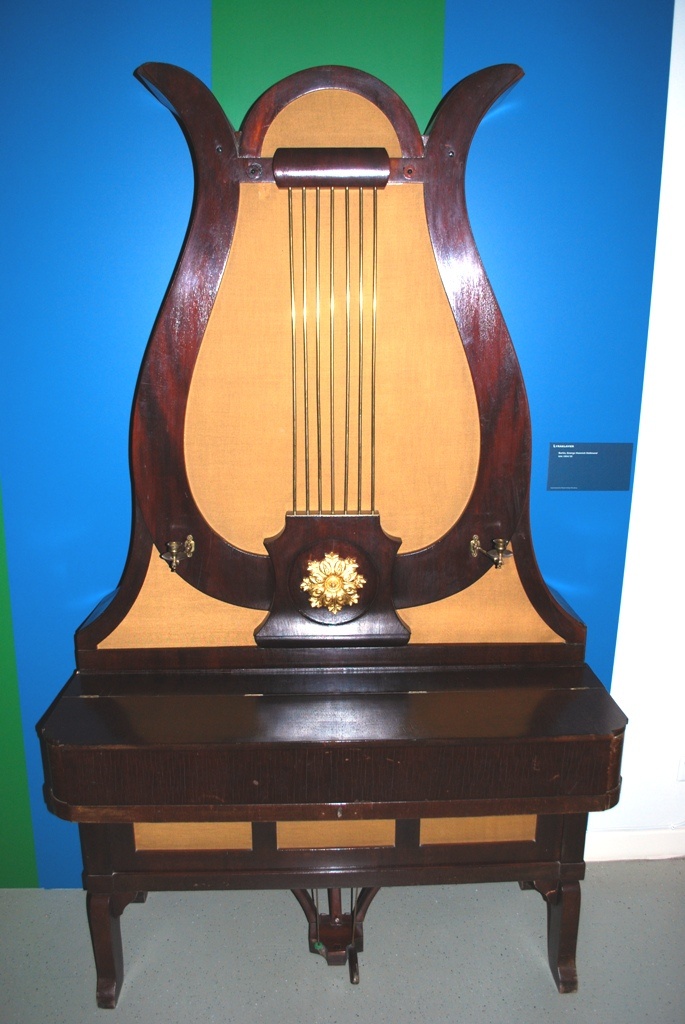Das Lyraklavier gehört als historische Bauform zu den Pianinos und ist eine Sonderform des Klaviers. Der Korpus des dekorativen Instruments ist aus Nussbaum gefertigt und besitzt die Form einer Lyra. Die Lyraform wird durch sieben bronzierte Stäbe - die Lyrasaiten - geschmückt. Dieses Lyraklavier wurde 1834/35 von dem Berliner Instrumentenbauer George Heinrich Hellmund (1825-1890) gebaut und zeichnet sich durch ein spezielles aufrecht stehendes Pianoforte-Pedal mit zwei Stegen aus, das eine eigene Erfindung Hellmunds war.
en

